terrabyte News
April 2025
DLR and LRZ will present jointly terrabyte at the EGU 2025 (28.04.-02.05.2025) in Vienna. You can meet us at booth #21 between our partners booths from DKRZ & University Hamburg (booth #18) and NFDI4Earth (booth #19).
Join our joint booth programme with different talks about projects and activities: https://nfdi4earth.de/nfdi4earth-egu-2025
terrabyte will present on:
- 30.04.2025 (12:30h - 13:00h): terrabyte - High Performance Data Analytics - Introduction and Use Cases (DLR)
- 30.04.2025 (13:00h - 13:30h): Sentinel-1 NRB - Data product and service offers (DLR)
- 30.04.2025 (15:45h - 16:15h): OpenWebSearch - Open European infrastructure for internet search, based on European values and jurisdiction (DLR)
- 01.05.2025 (12:30h - 13:00h): SOS - Serverless Scientific Computing and Engineering for Earth Observation and Sustainability Research (LRZ)
December 2024
On 28th and 29th November 2024, the terrabyte evaluation took place at the Leibniz-Supercomputing Center in Garching (Munich). The terrabyte team, consisting of DLR and LRZ employees, presented the technical infrastructure, service, operation, and the Earth observation data offer by the High Performance Data Analytics (HPDA) platform. Some of our terrabyte users have provided a practical insight into the use of terrabyte and its advantages - we greatly appreciate this commitment and would like to sincerely thank you for it.
The reviewers analysed the implementation, availability and innovative potential of the large project. In their statement at the conclusion of the event they recognize the value of the successful development by the two project partners of the terrabyte infrastructure, the fruitful applications and outstanding teamwork, and they gave valuable recommendations for future enhancement.
More information as well the group photo can be found here.
November 2024
We are happy to announce the second release of the terrabyte infrastructure, web services, and tools and herewith we would like to give a short overview. The complete release notes of the second version of terrabyte is available here. We would like to thank all who have contributed and used terrabyte!
Some recent highlights from terrabyte Version 1.2:
- Already since April 2024, we have additional compute nodes (in total 44.000 virtual CPU cores and 188 GPUs) and storage capacity (in total 55 PB net storage) available.
- To be transparent on which data is still missing for specific collections (e.g., Sentinel, Landsat, MODIS) we have published data dashboards and inventory files. With those you can easily query the status of our data ingestion for your own area and time of interest.
- The continuous ingestion of Sentinel and Landsat data has started. Sentinel data are ingested currently on an hourly basis after publication at the Copernicus Data Space Ecosystem.
- Since now you can manage your own STAC collections and items for private or shared access. Shared access relates to permission of a Data Science Storage container. By creating STAC collections and items, you can use the same tools when working with the STAC API of the curated data catalog (e.g., data cube functionality).
- With the
terrapicommand line tool you can easily work with both, the curated as well as the User STAC API (e.g., anything related to authentication). Further services will added in the future. In addition,terrapi-clientoffers similar functionality as Python functions. - We have conducted three terrabyte Café events this year as in-person meetings with presentations about terrabyte status, STAC API, and data offerings, and very good discussions. Thanks to anyone who has contributed and participated.
- The direct network line between LRZ and DLR (Oberpfaffenhofen) is already used to archive data and to publish data from the long-term archive.
What's next?
Please have a look at our detailed terrabyte roadmap as well as the data roadmap.
Some of our upcoming new features:
- A
restricted-dataAPI to ask for access to (upcoming) restricted datasets (e.g., datasets with license agreements, such as TerraSAR-X, EnMap). - Landsat Collection 2 Level-2 data ingestion will be completed in early 2025.
- The ingestion of the reprocessed Sentinel-2 Collection 1 data into terrabyte (Level-2A) and our long-term archive (Level-1C) will be continued.
- A
data orderingAPI to get access to on demand datasets (e.g., Sentinel-1 SLC, Sentinel-2 L1C). - An automated transfer between terrabyte and the EOC Geoservice to publish geospatial data.
April 2024
New compute nodes and storage capacity have been added to terrabyte. Now, we have 262 HPC nodes and 47 A-100 GPUs nodes available. In sum, terrabyte provides ca. 44.000 virtual CPU cores and 188 GPUs.
Additional 17 Petabyte of storage has been installed by LRZ, which will further extend the storage capacity to 50 Petabyte useable net storage. The additional 17 Petabytes are used for further curated datasets (e.g., Sentinel-1 Normalized Radar Backscatter, global Sentinel-2 Collection 1 Level-2A).
July 2023
Official launch of terrabyte web services. All users with an internal DLR account can create a terrabyte/LRZ account from the self registration service.
For functional details, see table V1 Summer 2023 of the Roadmap.
June 2023
The terrabyte Roadmap is now available.
Official launch of the terrabyte infrastructure at LRZ.
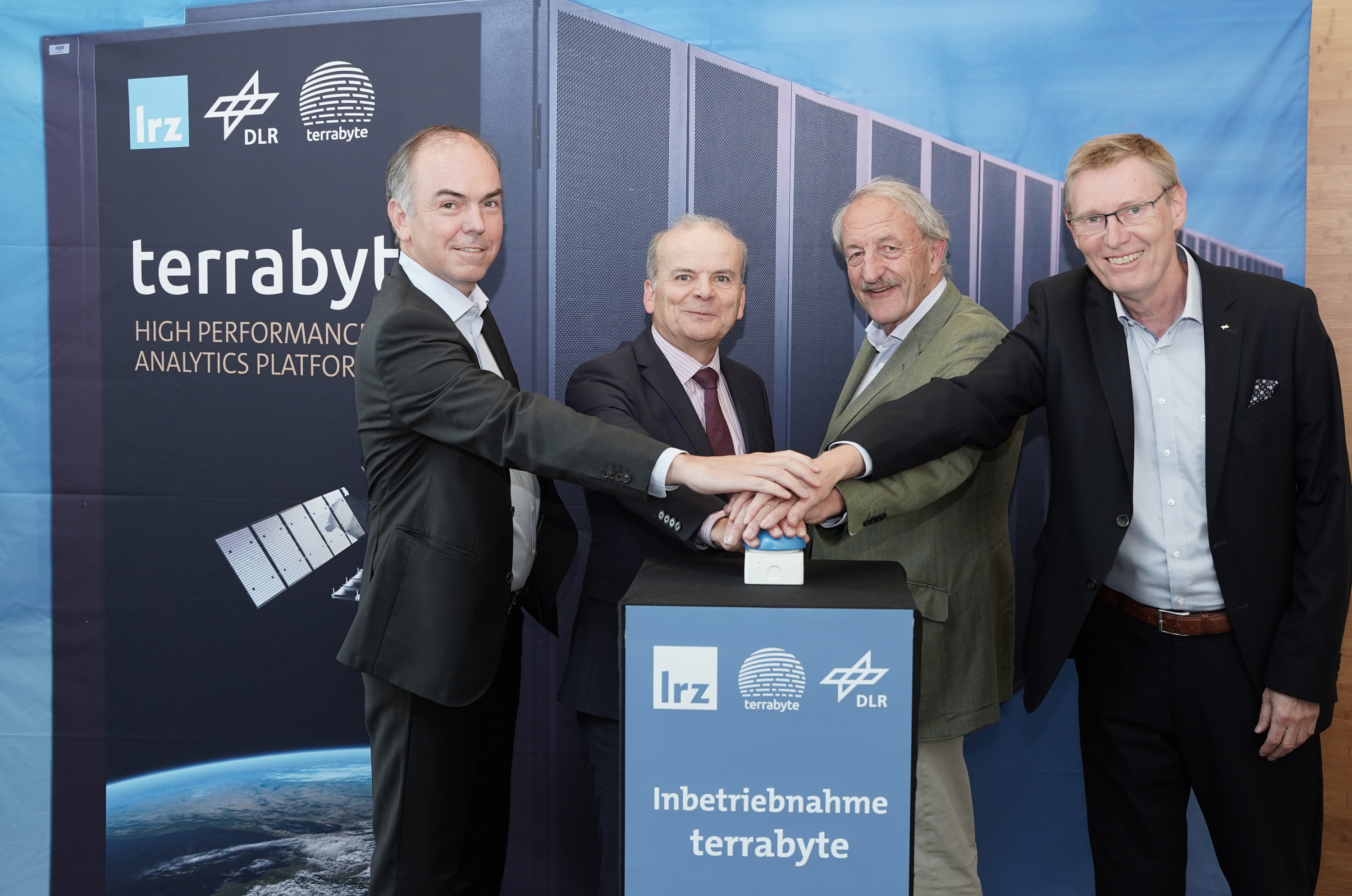
From left to right: Dieter Kranzlmüller (Chair of the Board of Directors of the Leibniz Supercomputing Centre (LRZ)), Rolf-Dieter Jungk (Bavarian State Minister of Science and the Arts), Markus Schwaiger (President of the Bavarian Academy of Sciences), and Stefan Dech (Director of the German Remote Sensing Data Centre at DLR), Credits: LRZ
January 2023
First terrabyte webservices have been provided, e.g. user authentication and the compute portal.
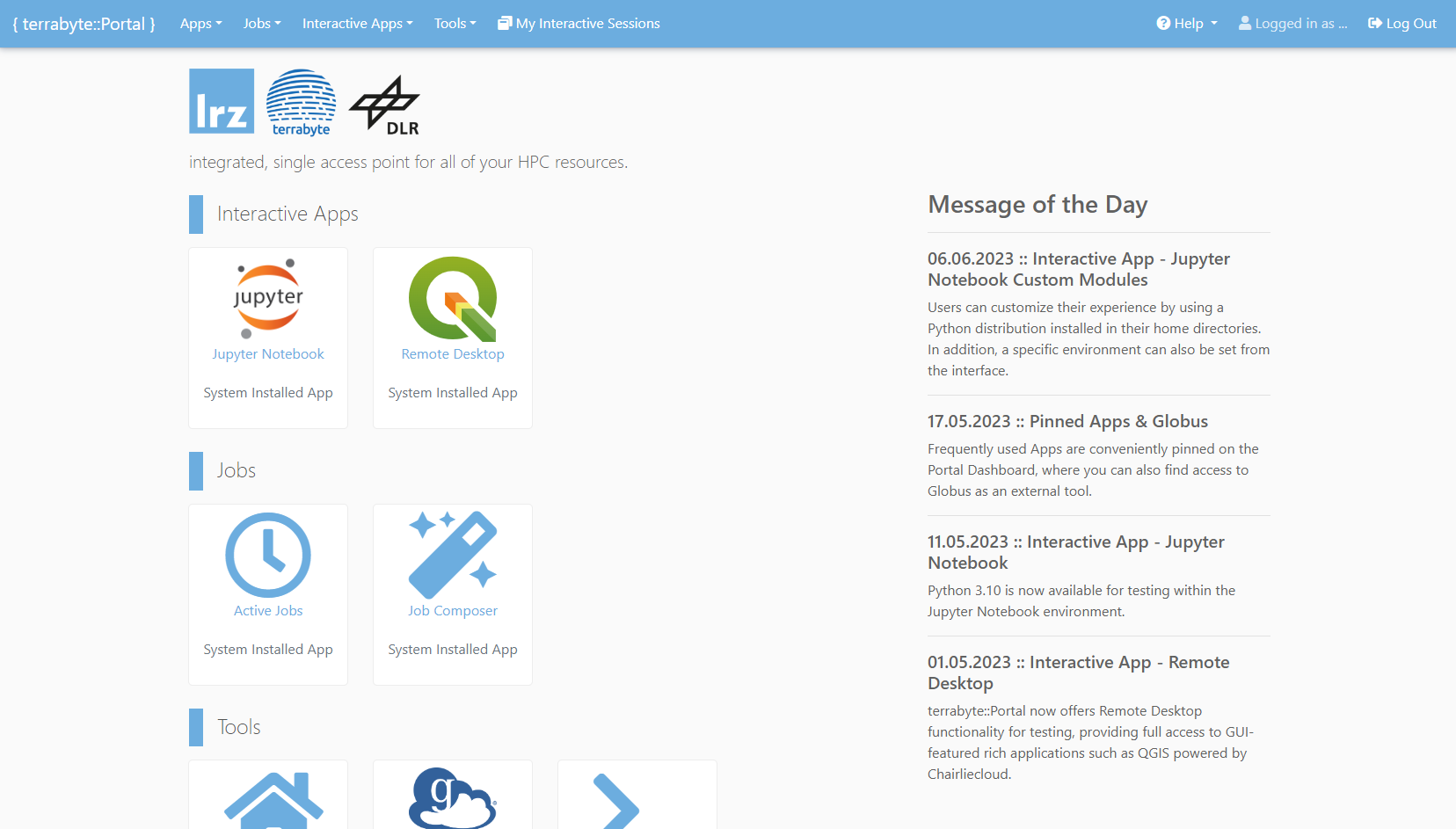
December 2022
Compute hardware can be used operationally for terrabyte pilot users.
April 2022
Delivery and installation of first compute hardware.
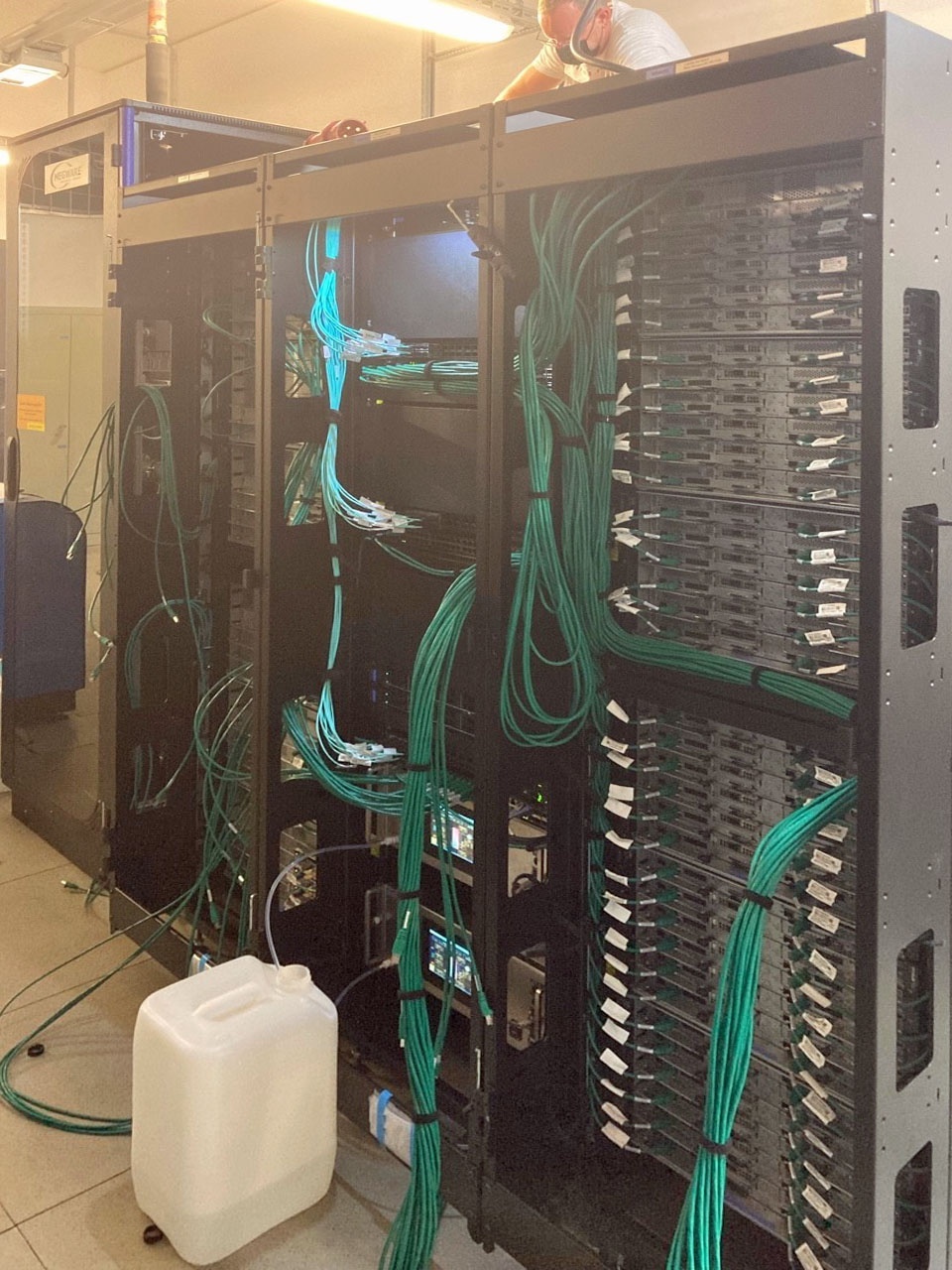
May 2021
DSS Storage is available for use.

December 2020
Delivery of first hardware (DSS storage)
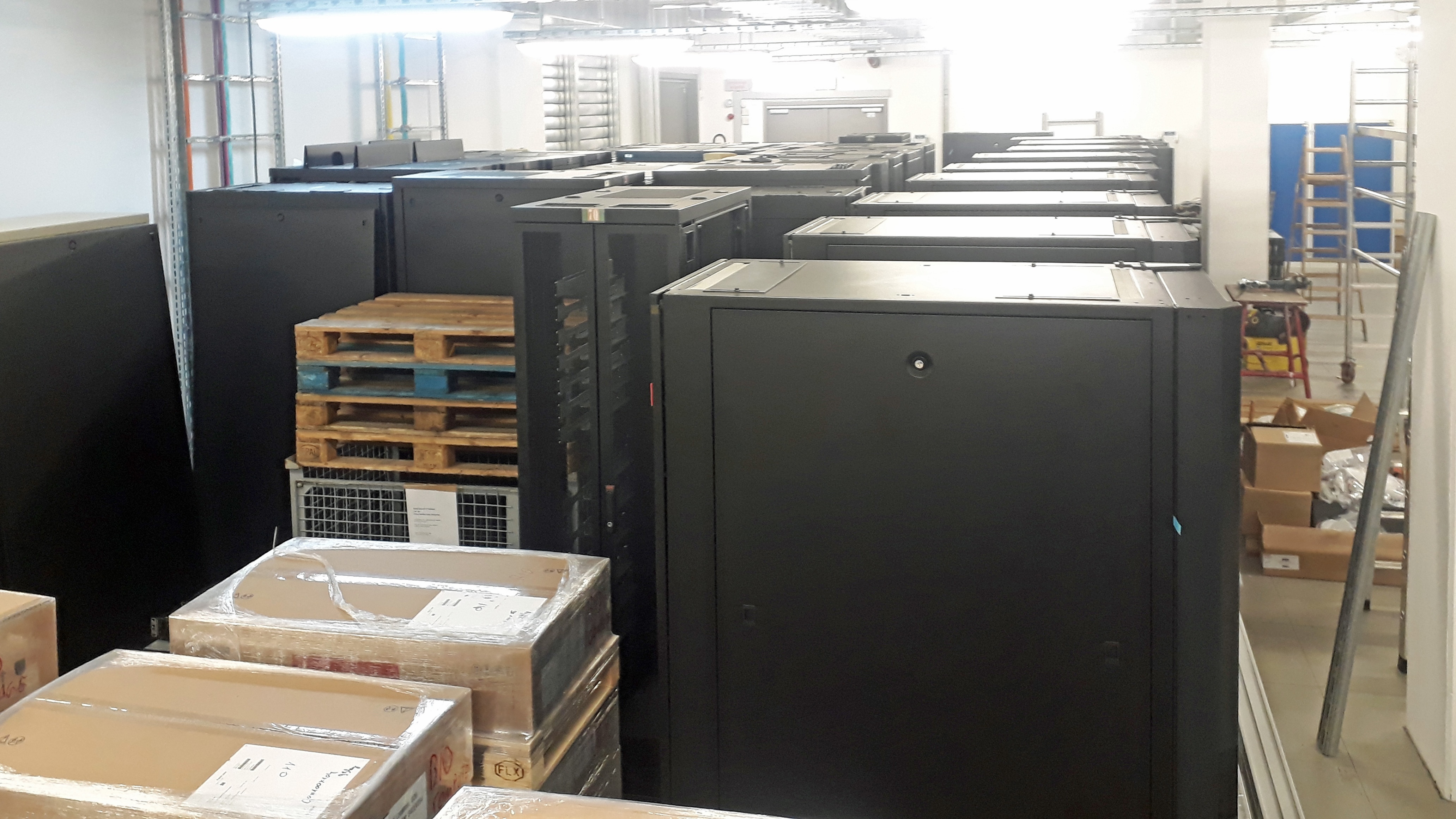
May 2019
Ceremonial signing of the Terra_Byte cooperation agreement.
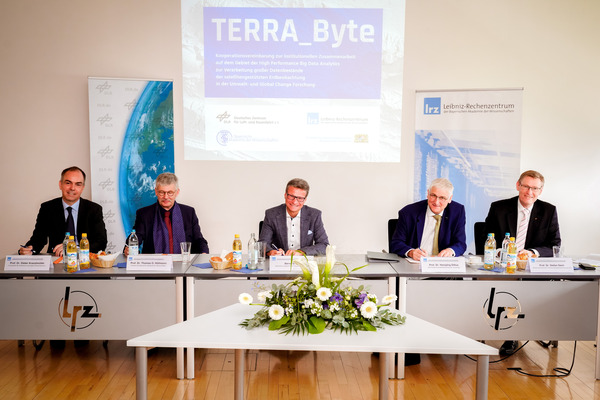
From left to right: Dieter Kranzlmüller (Chair of the Board of Directors of the Leibniz Supercomputing Centre (LRZ)), Thomas O. Höllmann (President of the Bavarian Academy of Sciences), Bernd Sibler (Bavarian State Minister of Science and the Arts), Hansjörg Dittus (DLR Executive Board Member for Space Research and Technology) and Stefan Dech (Director of the German Remote Sensing Data Centre at DLR), Credits: LRZ